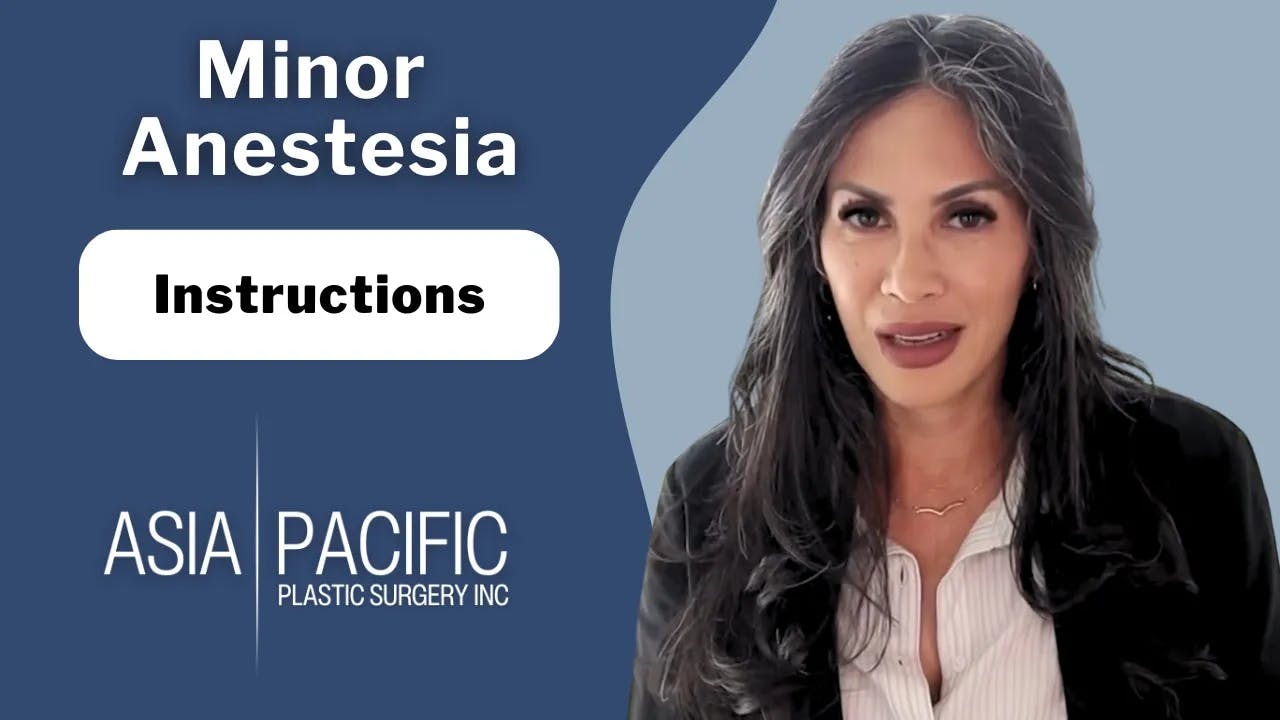Otoplasty Pre & Post Operative Instructions
Please Read First
This page provides a condensed overview of preparation and recovery guidelines for otoplasty (ear surgery). For complete instructions—including detailed timelines, medication adjustments, and incision care—please download the full Pre-Operative and Post-Operative instruction documents below.
Minor Anesthesia Instructions
What to Expect
Otoplasty is performed under local anesthesia. You will remain awake during the procedure, but the surgical area will be numbed for your comfort. This approach allows for quicker recovery and minimal side effects.
Most patients take about 5–7 days off work, with swelling and bruising gradually improving over 2–3 weeks. Some swelling may persist longer but typically resolves over time.
Key Pre-Operative Guidelines (Summary)
No fasting required unless otherwise directed. You may eat and drink normally.
Medications: Stop aspirin, NSAIDs, vitamin E, fish oil, and other blood-thinning supplements 2–3 weeks before surgery.
Day of Surgery:
- Shower the morning of surgery with mild soap; avoid lotions, deodorant, or creams.
- Remove all jewelry and piercings from the neck up.
- Do not wear makeup or skincare products.
- Wear loose, front-opening clothing (avoid pullovers).
Suggested Supplies:
- Tylenol (acetaminophen)
- Soft headband (may be provided) to protect ears during healing
Key Post-Operative Guidelines (Summary)
Pain Management: Use Tylenol as directed; avoid NSAIDs. Prescription pain medication, antibiotics, and anti-nausea medications may be provided.
Cold Therapy (optional): Apply cool compresses to reduce swelling in the first 48–72 hours (15–20 minutes on, 40+ minutes off).
Activity:
- Gentle walking is encouraged within a few days.
- Avoid bending, straining, or vigorous activity for 1–2 weeks.
- Light exercise can resume after 2–3 weeks; full exercise at 6–8 weeks.
- Be cautious with glasses or sunglasses for the first 2 weeks so they do not press on incisions.
Work: Most patients return to work in 5–7 days, depending on job type.
Bathing:
- Showering is allowed the day after surgery.
- Avoid baths, hot tubs, swimming pools, and the ocean until cleared by your surgeon (usually 2 weeks).
Incision & Ear Care
Clean incisions daily with mild soap and water.
Avoid picking at stitches; dissolvable sutures will resolve naturally.
Protect incision sites from sun exposure; use SPF 30+ when outdoors.
Some drainage, bruising, and swelling are normal and should improve with time.
Itching and numbness at the incision sites are common and temporary.
Recovery Expectations
Days 1–3: Swelling and bruising peak; use cool compresses and rest with head elevated.
Week 1: Stitches removed (if applicable). Most patients return to work.
Weeks 2–3: Light activity resumes. Swelling improves.
Weeks 6–8: Full physical activity typically allowed.
Long-term: Mild swelling and firmness may last several months as the ears heal.
Follow-Up and Support
Urgent Concerns: Call if you notice fever >101°F, severe pain not relieved by medication, unusual drainage, or rapidly worsening swelling/redness.
Emergency Situations: Call 911 or go to the nearest ER if you experience chest pain or difficulty breathing.
Ongoing Communication:
- Non-urgent: [email protected]
- Urgent (9am–5pm): (808) 585-8855
- After hours: Physician exchange (808) 524-2575
Appointments: All follow-up visits are essential for monitoring your recovery.

